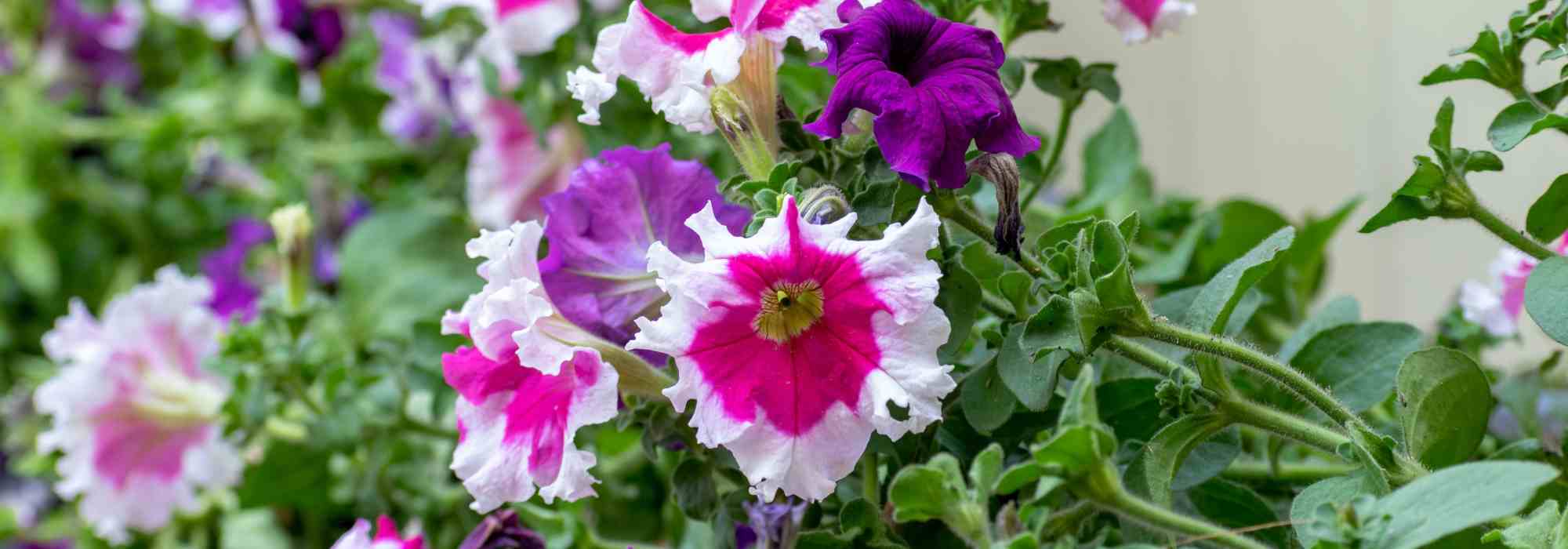
Diseases and parasitic pests of petunias and surfinias
Identification, prevention and natural solutions
Contents
The petunias and surfinia (hybrid trailing-stem varieties) are essential annuals to brighten up the garden, terrace or balcony. Generous in their flowering, they bloom for long months from late spring to autumn, displaying cheerful and vibrant colours.
Although they are easy-going plants, they can nevertheless fall victim to parasitic pests or diseases that affect their lovely flowering. Let’s look at the most common issues, how to prevent risks and apply natural treatments if needed to keep petunias or surfinia in top health.
Fungal diseases
Identification
These are the most common garden diseases, which most gardeners inevitably encounter. They are caused by fungi, which spread rapidly through spores and prove highly contagious. Moreover, these spores can persist in the soil for long periods, waiting for a new plant to infect. These diseases, which thrive in mild and humid conditions, are most visible during spring and autumn.
In petunias and surfinias, powdery mildew may appear first. Also known as “white mould”, it is recognisable by the white, farinose coating that appears on the foliage, stems, and even flower buds. The aerial parts then become deformed, flower buds fail to open, and the plant’s overall health declines. If contamination occurs in autumn, it’s less serious as the plant is nearing the end of its cycle (unless you plan to overwinter it by protecting it from frost). However, petunias or surfinias affected by powdery mildew in spring may wither and infect neighbouring plants.
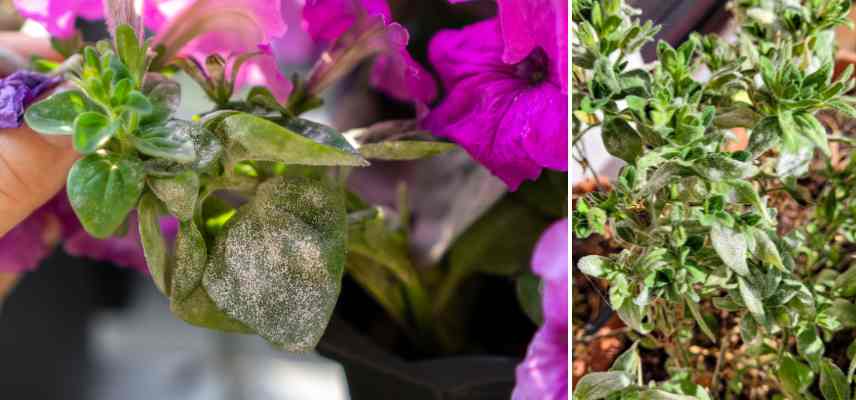
Blight, commonly known to affect tomatoes, can also strike petunias and surfinias. It is characterised by yellow, then brown or black spots on all aerial parts of the plant. It hampers growth and inevitably reduces flowering.
Root rot is another fungal disease that can cause petunias and surfinias to decline. Symptoms logically appear first on the roots, which become soft and brown. However, gardeners often only notice the problem when the foliage starts wilting—unfortunately, by then it’s usually too late.
We must also mention fusarium wilt, which causes the plant to wilt by blocking or destroying the sap-conducting vessels. The first symptoms are yellowing shoots and leaves starting from the base of the plant.
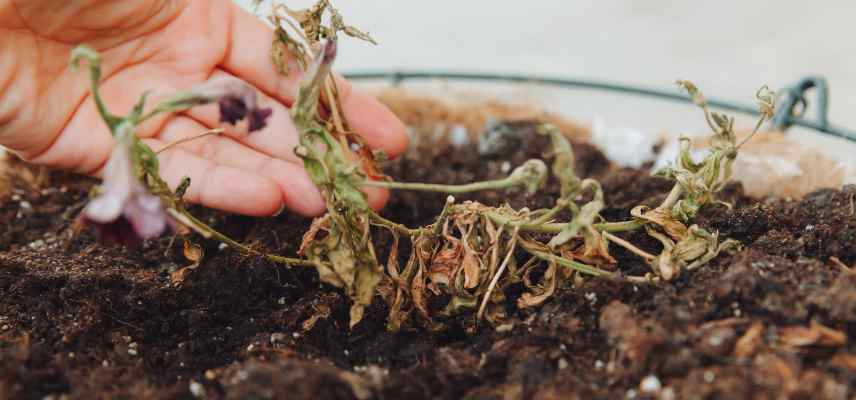
Prevention and Solutions
There aren’t always effective treatments for fungal diseases, so prevention is particularly important.
- Pay attention to growing conditions. A healthy plant will naturally be more resistant to diseases, as well as parasitic attacks. Place your annuals in full sun, in fertile, well-drained soil, to prevent water from stagnating around the roots. For container planting, always choose pots with drainage holes and add a layer of drainage material (such as gravel, river sand, or clay pebbles) at the bottom. Avoid planting petunias and surfinias in the same spot or in soil previously contaminated by fungal diseases, as spores can linger for years. Finally, choose a well-ventilated location and ensure plants aren’t overcrowded—space them about 30 to 40 cm apart.
- Water carefully. Petunias and surfinias need regular hydration, but it’s important to let the soil dry out between waterings. Avoid wetting or splashing the foliage when watering. If plants are in containers with saucers or outer pots, empty excess water after 30 minutes to prevent root rot.
- Prune properly. When trimming petunias and surfinias to remove damaged leaves or spent flowers, always disinfect your cutting tools with alcohol beforehand. This helps prevent the spread of diseases between plants.
- Petunias and surfinias are quite hungry plants, especially in containers. Choose fertilisers suited to flowering plants, rich in potassium. Conversely, excess nitrogen can make plants more fragile and susceptible to disease.
- Try plant teas. These are natural, low-cost solutions if made at home. Many gardeners use them to prevent fungal diseases and boost plants’ natural defences. Nettle or horsetail teas are particularly popular. They may also have fungicidal effects if applied early enough.
If disease is confirmed, promptly remove affected parts and dispose of them at a waste facility (spores could survive in compost).
Natural fungicidal treatments exist, such as Bordeaux mixture. Again, it works best as a preventive measure or at the very first signs of disease. This powder must be diluted in water and sprayed on affected areas. However, its use should be moderated—the copper it contains isn’t biodegradable, and excessive application can eventually disrupt soil balance.
For further reading:
- All about fungal diseases
- Powdery mildew or white mould
- Fusarium wilt: prevention and treatment
- Bordeaux mixture and other copper-based treatments
- Making nettle tea
- Horsetail tea
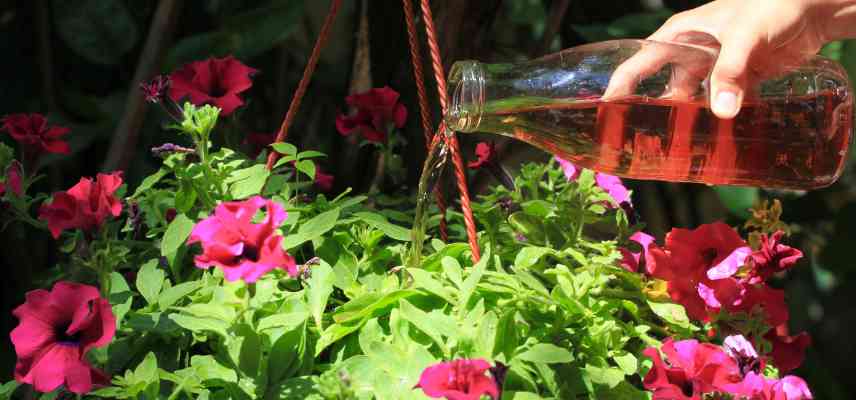
Petunias and surfinias are hungry plants! Feed them fertiliser
Chlorosis
Identification
Chlorosis is a disease caused by excess lime in the soil, leading to iron deficiency. It affects the natural synthesis of chlorophyll, causing foliage discolouration and overall weakening of the plant.
Prevention and Solutions
If you know your soil is chalky, grow petunias and surfinias in potting compost or add heather soil.
Avoid watering your plants with tap water (prefer rainwater instead).
In case of confirmed disease, anti-chlorosis products containing iron chelate are quite effective. They help green up the foliage, but this is not a long-term solution. It is essential to review growing conditions to prevent chlorosis from recurring.
For more information on this topic, read our article: Iron Chlorosis.
Slugs
Identification
No need for lengthy descriptions here – you’ve surely already come across them! These slimy gluttons feast on leaves and even flower buds from spring onwards. You’ll spot them by the nibbled foliage and slime trails.
Prevention and Solutions
There are numerous solutions against slugs and snails. Each has its advantages and disadvantages: it’s up to you to find the one that suits you best and works in your garden.
For lethal solutions, opt for beer traps, ferramol-based pellets (distinct from old toxic and polluting pellets) or manual removal.
To repel these unwanted visitors, prefer natural barriers made of ash, pozzolan or eggshells. They should be spread in a thick layer and regularly renewed to be effective.
To learn more, discover our article: Slugs: 7 ways to fight them effectively and naturally.
Aphids
Identification
Another common parasitic pest in cultivation: the aphid. This small insect pierces plants to feed on their sap. While a few individuals won’t cause problems, an infestation can impact plant growth and lead to its decline.
Most importantly, by secreting honeydew, aphids create fertile ground for the development of a fungal disease called “sooty mould”. It appears as black soot-like spots under foliage, preventing photosynthesis.
Finally, aphids may also facilitate the spread of viruses and bacteria.
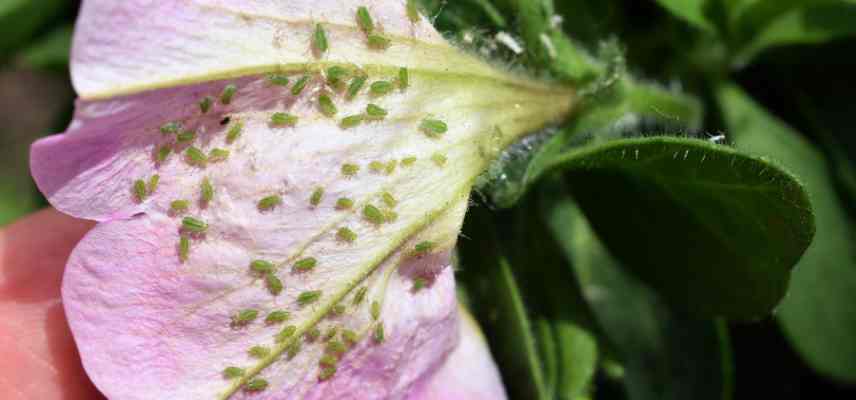
Prevention and Solutions
Regularly inspect your petunias and surfinias to intervene at the first sign of aphids. If few in number, they can be removed by hand.
In case of infestation, use a natural insecticidal soap spray, which can be homemade. Mix one tablespoon of pure black soap with 1 litre of warm water. Stir, pour into a spray bottle, and apply to affected areas. Treat early morning or late evening, avoiding direct sunlight.
Tansy manure tea is also believed to have natural repellent properties against aphids.
Finally, you may choose to sacrifice one plant to aphids to protect your petunias and surfinias. Nasturtium is notably recognised as an effective trap plant, attracting aphids away from other crops.
For more information, read our article: Aphids: Identification and Treatment
- Subscribe!
- Contents
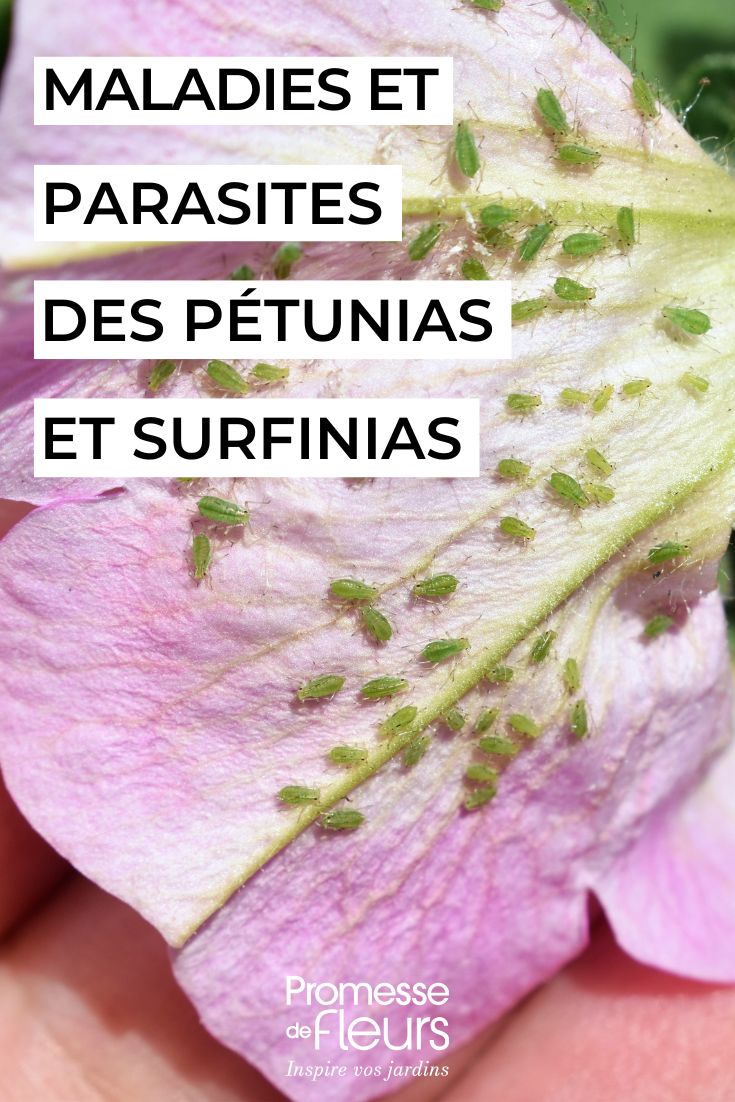































Comments